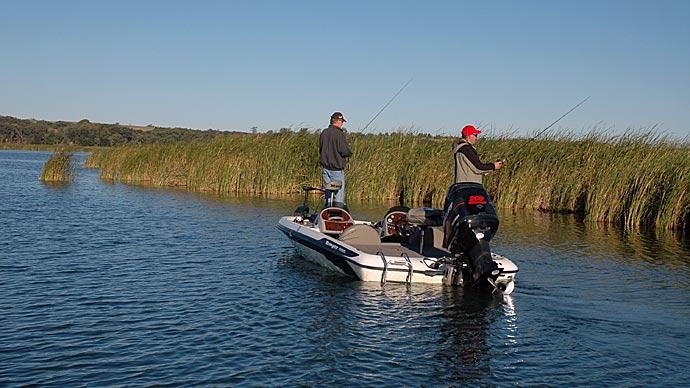
The electronic side of angling is more important than some people think. Boat, motor, lithium batteries, highly specialized trolling motors, forward-facing sonar, shallow water anchors, and more are now all part of a day of fishing for some anglers.
Unlike other sports, which only require a good pair of shoes or a set of clubs and some talent to be successful, fishing not only requires knowledge of fish behavior and the ability to make proper presentations, it requires a smooth functioning array of equipment, all working together to be able to compete.
An area that has been a thorn in the side of folks for a long time has been interference with your electronics. This has been happening for decades and now with many anglers running multiple electronic screens, it can become an even bigger issue.
Due to innovations in the industry, this subject is worth another look. What causes interference and can we do something about it?
Interference traditionally has been caused by trolling motors. The electrical impulses cause display screens to either blossom or blank out while the trolling motor is engaged. Perhaps a fuzzy line will appear on your screen whenever you put your trolling motor to use, for example. The severity of interference might vary between trolling motor manufacturers and how the boat is rigged, but there are several other sources of interference around the boat. You can't just assume that it's your trolling motor causing all the problems. Transducer positioning and wiring configurations can contribute to the problem as well.
Add in the fact that transducers use multiple frequencies, and the problem can be compounded. A good rule of thumb is to ensure that each unit is running at a different frequency. For example, if one graph is running High Chirp, the others should be set to Low or Medium. This simple adjustment will eliminate most of the interference in today's marine electronics.
If this does not fix the problem, it could be your trolling motor. The first thing you want to do under these conditions is to turn the sensitivity down. You should have a setting on your finder that shows from zero to 100 percent sensitivity. Turn the sensitivity to 75 percent. This move, in and of itself, will reduce some of the interference. There are times in the summer when you have a lot of algae and plankton growth in a lake you can easily get away with 50 percent sensitivity, so be careful not to go over 75.
Be sure when you rig your boat that you don't run the transducer wire down the power cable or foot pedal for the trolling motor, because this will add to the problem. The transducer cable should run down the outside of the shaft. I know this doesn't always look the best, and you might be tempted to run it down inside your cable harness, but don't do it. By running the cable on the outside of the motor you will limit interference in a big way.
Grounding is an important issue for the trolling motor side of the equation. I've mentioned this in other columns, but it bears repeating here. If your trolling motor is not properly grounded, electrolysis, the movement, or leak of electrical current could be a major source of interference and poor performance. Ground the motor to the negative side of the battery. I know this sounds simple, and it is, but you should see the numbers of people who don't get it. These simple methods mentioned here will solve your interference problems.
The fall should be an exciting time for fun fishing and for getting involved in tournaments if that is something you want to do. Good luck and God Bless.
Reprinted with permission from Bass West Magazine



